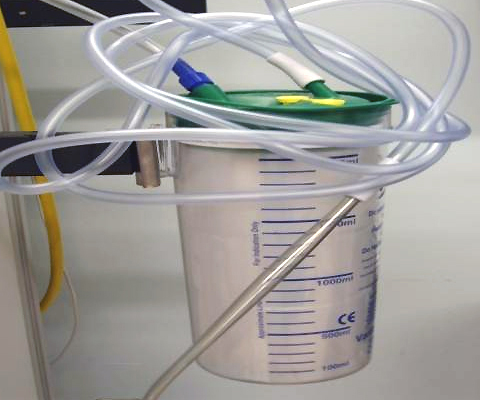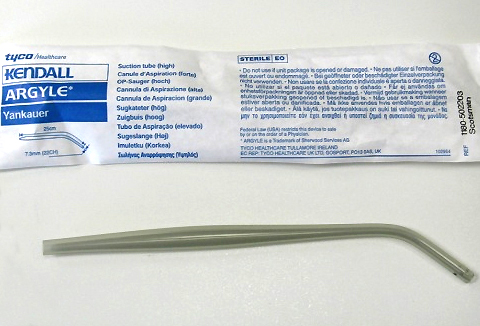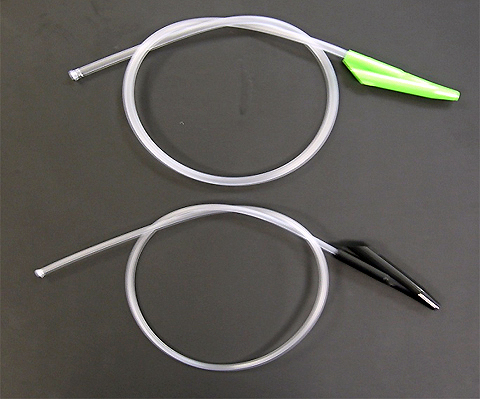Patients are unable to swallow during anaesthesia, so saliva can accumulate within the mouth and pharynx. Surgical procedures performed in and around the airway (e.g. in ENT and maxillofacial practice) may allow blood and other debris to soil the airway. Patients may also passively regurgitate during anaesthesia, allowing gastric contents to contaminate the upper airway.
It is therefore very important to clear the back of the mouth and pharynx of secretions and other debris before attempting extubation. A plastic Yankauer sucker is commonly used. Do this gently to avoid trauma to soft tissues and teeth, and under direct vision if possible. Take particular care when doing this after surgery that has been performed in the airway (e.g. after tonsillectomy or adenoidectomy).
Secretions may also accumulate within the lumen of the tracheal tube, or further down the tracheo-bronchial tree. These can be aspirated through a suction catheter passed through the lumen of the tracheal tube. Preoxygenation will help to prevent hypoxia during this manoeuvre.


